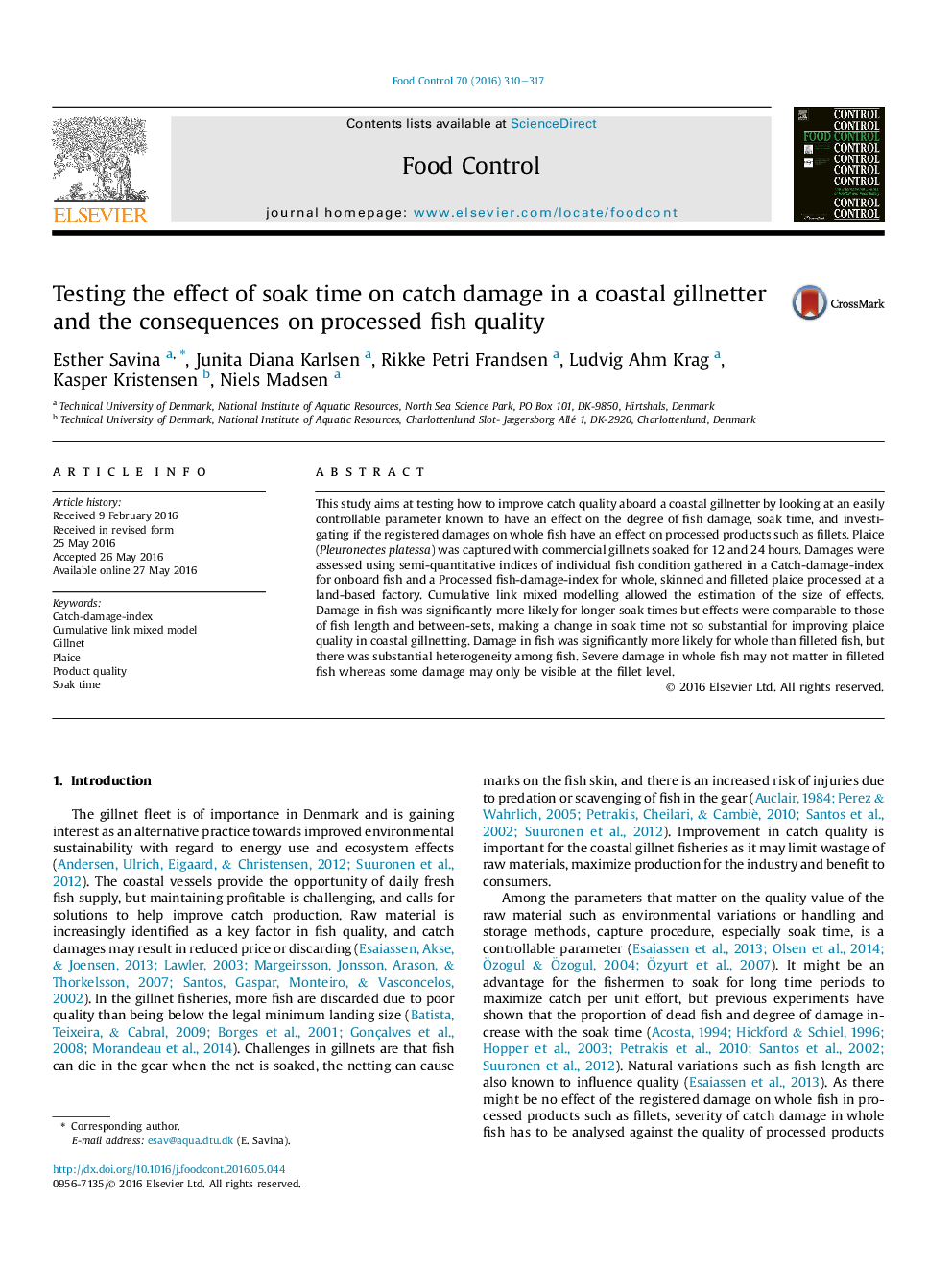| Article ID | Journal | Published Year | Pages | File Type |
|---|---|---|---|---|
| 4559001 | Food Control | 2016 | 8 Pages |
•Catch damage in fish is more likely for longer soaking times and smaller fish.•The effect of soaking time was comparable to those of fish length and between-sets.•Some damage on whole fish has no effect on the fillet produced.•It is difficult to directly estimate processed product quality from catch damage.•Cumulative link mixed modelling works well with semi-quantitative indices.
This study aims at testing how to improve catch quality aboard a coastal gillnetter by looking at an easily controllable parameter known to have an effect on the degree of fish damage, soak time, and investigating if the registered damages on whole fish have an effect on processed products such as fillets. Plaice (Pleuronectes platessa) was captured with commercial gillnets soaked for 12 and 24 hours. Damages were assessed using semi-quantitative indices of individual fish condition gathered in a Catch-damage-index for onboard fish and a Processed fish-damage-index for whole, skinned and filleted plaice processed at a land-based factory. Cumulative link mixed modelling allowed the estimation of the size of effects. Damage in fish was significantly more likely for longer soak times but effects were comparable to those of fish length and between-sets, making a change in soak time not so substantial for improving plaice quality in coastal gillnetting. Damage in fish was significantly more likely for whole than filleted fish, but there was substantial heterogeneity among fish. Severe damage in whole fish may not matter in filleted fish whereas some damage may only be visible at the fillet level.
